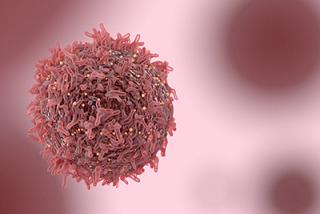
Yi Qiao, PhD, director of research and science at USTAR Center for Genetic Discovery, is merging two of his childhood interests — biology and computer science — to understand how cells in a cancerous tumor change.
“Every cancer comes into being for different reasons,” Qiao said.
He created a computer algorithm to detail this change that could ultimately help clinicians find the right treatment at the right time to eradicate cancer from a patient’s body.
Qiao, who conducted his doctoral work in Gabor Marth’s lab, explains that cells in a cancerous tumor are different from regular cells.
Noncancerous cells are homogenous and always contain the same inherited mutations. Cancerous cells are heterogenous or highly variable. They give rise to clusters of cells, called subclones, with mutations that impart an evolutionary advantage over other cells in the tumor.
“Different cells (subclones) acquire different mutations and occupy a different percentage of a tumor [as it evolves],” said Qiao.
Watch a video (below) that differentiates between noncancerous homogenous cells and heterogeneous cancerous cells.
To accomplish this task, Qiao created a computer algorithm, called Subclone Seeker, to differentiate between normal and cancerous cells obtained from a tumor biopsy. The algorithm goes further by differentiating between mutational subclones within the tumor itself.
“This approach is cancer-type agnostic,” said Qiao.
He continues that the technique does not hold any preconceived bias for a particular outcome. The algorithm simply fits a biologically plausible mathematic model to the data to recreate how the tumor evolved.
In a recent study published in Nature Communications, Qiao applied his algorithm to samples obtained from four women, whose breast cancer changed during 2-15 years of treatment. Samples were taken before and after each series of chemotherapy.
The results were not what the team expected.
The first treatment knocked the cancer down, but as the pressure from chemotherapy lifted, it began to grow again. The returning cancerous cells were identical to the original tumor.
Following the second chemotherapy session, the original cancer was eradicated, but one sub-clone survived. This sub-clone acquired extra mutations that allowed it to withstand the original chemotherapy treatment. These mutant cells became the founding population that gave rise to future resistant cancerous cells in the patient that were not affected by successive, different chemotherapy treatments.
“This is uncharted territory,” said Gabor Marth, DSc, professor of Human Genetics at University of Utah Health and co-director of the USTAR Center for Genetic Discovery. “We may not understand how the mutation is affecting the gene, but finding chemo-resistance could make a big difference in the future of cancer treatment.”
Qiao hopes that this approach could become a standard practice of care. By evaluating each individual cancer patient’s tumor in real-time, clinicians can tailor treatments to eradicate the cancer, prolonging life and wellbeing.
“Cancer is a highly personalized disease, which means every patient requires a highly personalized treatment,” he said. “This is a better approach than shooting blind and hoping a treatment works.”
Yi details that development of the Subclone Seeker algorithm in an article titled SubcloneSeeker: a computational framework for reconstructing tumor clone structure for cancer variant interpretation and prioritization, published in the journal Genome Biology. The algorithm, which is available at https://github.com/yiq/SubcloneSeeker, is free of charge to any person obtaining a copy of this software and associated documentation files.
